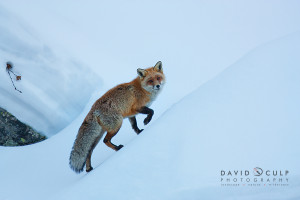Photographing wildlife is one of my favorite things to do. I don’t live in area renowned for elite wildlife imagery, but I have been lucky enough to travel to some unique locations to photography some apex predators.
 While ensuring a sharp image is probably the most critical aspect of a good wildlife shot, one of the hardest things to accomplish is often proper exposure, especially on dark furred creatures. The most important aspect here is to get the animal properly exposed first. Often wildlife photography involves the unexpected. I always keep my camera ISO a bit higher than I might need, the depth of field a bit wider than I might need and most importantly, I use spot metering. This will ensure if the unexpected happens, you will get an image where the subject is not blurry, the animal is in the focal range and at the very least, your subject is properly exposed.
While ensuring a sharp image is probably the most critical aspect of a good wildlife shot, one of the hardest things to accomplish is often proper exposure, especially on dark furred creatures. The most important aspect here is to get the animal properly exposed first. Often wildlife photography involves the unexpected. I always keep my camera ISO a bit higher than I might need, the depth of field a bit wider than I might need and most importantly, I use spot metering. This will ensure if the unexpected happens, you will get an image where the subject is not blurry, the animal is in the focal range and at the very least, your subject is properly exposed.
Once you know you have the first good shot, glance at your histogram or your highlight alerts and ensure the surroundings in the composition are not over exposed. If it is, adjust this first. You can always brighten an image that is a bit dark, but once a highlight is blown out, there is not much coming back from it.

Now that you have a few images in the bag and you still have time for a few more clicks, fine tune the image by adjusting the ISO to the lowest level where you can still get a sharp focus with the existing movement and lighting conditions. And then fine tune your aperture to get the desired depth of field in focus.
This sounds like a lot of steps and that it might take too long, but once you have more experience, there will be less fine tuning necessary and you will reach the desired result much more quickly.

